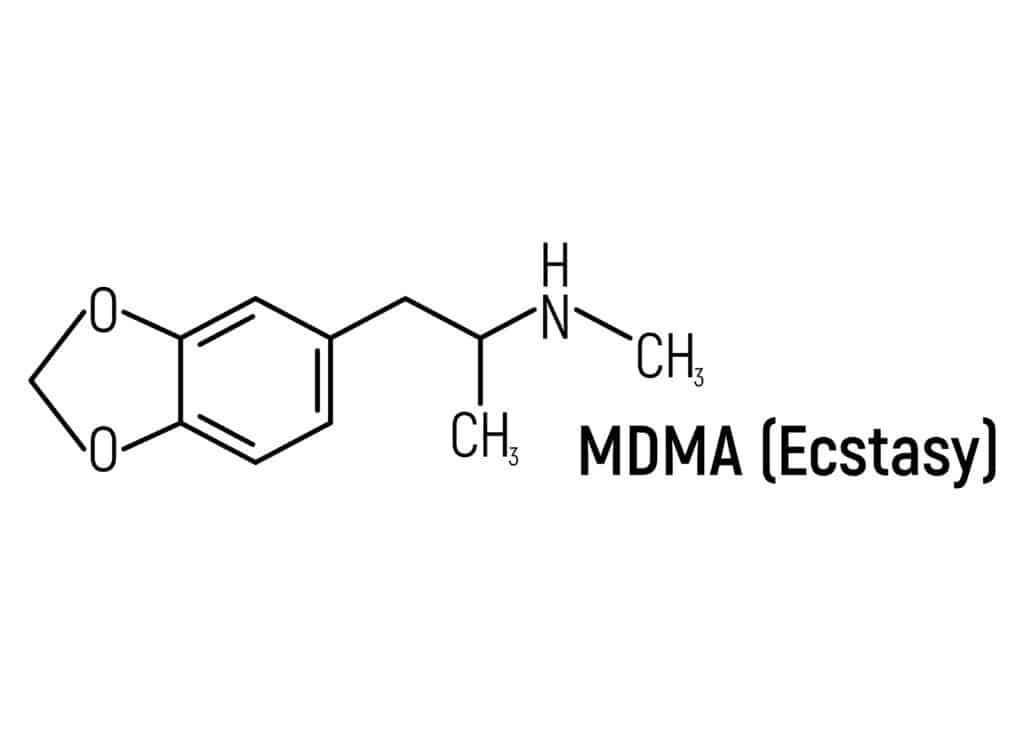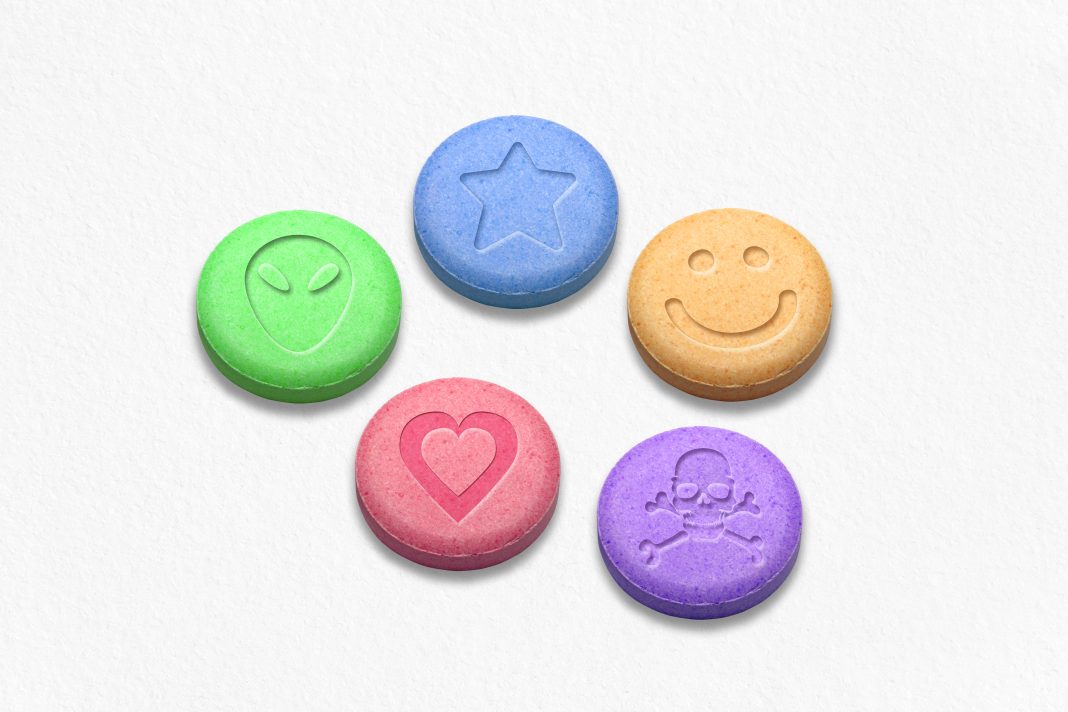You might be familiar with the sassafras plant. You’re also probably familiar with the drug MDMA, even if you only know it by name and not experience. What you probably don’t know, is that MDMA is the likely reason that the otherwise innocent sassafras plant, was banned in the US and beyond.
A little on sassafras
The first thing to know about sassafras is that its not a psychoactive plant. It doesn’t make a person high or euphoric, it doesn’t bring on hallucinations, and it was never used in either of these capacities. However, it has a powerful ability as a medicinal plant, and its history is mainly as this.
Sassafras originated in Cherokee territory, and entered European culture by way of European settlers. Beyond North America, there are two species of the plant that originate in East Asia. The North American version is classified as Sassafras albidum. The whole plant is an aromatic plant, and the roots, in particular, are used to make oil. Sassafras oil contains at least 80% safrole, which is the compound most associated with its medical benefits.
Cherokee traditions use the oil for a number of issues, including venereal diseases, skin ailments, rheumatism, diarrhea, appetite suppression, colds, as a vulnerary wash, for blood purification, and enhancing other herbal concoctions. It’s used as an abortifacient, perfume, natural insect repellent, as a natural pain reliever, to treat lice, and to soothe insect bites, as well.
The Cherokee harvest only young plants with red stems. According to local traditions, the red-stemmed plants are considered medicine; while the alternate white-stemmed plants, are considered poison. This idea may or may not be related to how the plant is viewed today. And it might shine a light on the idea that knowing how to prepare something, is the difference between safe and dangerous.
Sassafras also used to be an ingredient in root beer. In fact, sassafras was responsible for much of the taste. However, because of its current illegal standing, other artificial ingredients now replace sassafras, changing the taste of the soda. Some say, for the worse. If you crush or tear a sassafras leaf, you’ll get that great root beer smell.
A bit on MDMA
You might have forgotten while reading through about sassafras, that this is actually an MDMA-related article. MDMA is a psychostimulant, which acts similarly to classical psychedelics (LSD, psilocybin, mescaline, and DMT), in that it acts as an agonist at 5-HT serotonin receptors, forcing the brain to release more serotonin, and blocking re-absorption to force more into the brain.
MDMA, or 3,4 methylenedioxymethamphetamine is often referred to as ecstasy, although this term sometimes simply denotes an impure product. It also goes by the name Molly, which is short for ‘molecular.’
It was created in 1912 by Merck Pharmaceutical. It wasn’t used or understood much at this time; and essentially sat on a back shelf until the 1970’s, when Alexander Shulgin found a new way to synthesize the drug. He subsequently tested it out with his therapist friends; who began using it in their practices along with assisted therapy. It was found that MDMA reduced fear and anxiety in at least some people, while also increasing feelings of empathy and overall connection between people.
Though it seemed to work well in psychiatric practice, the drug was nonetheless made illegal by the US federal government in 1985, by way of the previously installed Comprehensive Crime Control Act from the year before. This law allows the government to immediately ban a substance it deems dangerous; and was used at its onset to make LSD and magic mushrooms illegal.
Much like its psychedelic cousins, and other hallucinogens like ketamine; MDMA came back into prominence in the last few years. Cannabis legalization has softened the public’s feelings toward some drugs, and compounds like MDMA have been able to gain more traction than they were in decades prior. In the case of MDMA, particularly for its ability to help with PTSD reactions; something that can be seen in EEG and fMRI research.
Colorado was the first state to legalize medical MDMA, contingent on a US approval. Australia was the first country to pass a medical legalization. Currently, the company MAPS has an MDMA drug for PTSD which received ‘breakthrough therapy’ status from the FDA; indicating a desire to get this product to market quickly.
How MDMA got sassafras banned
We’re now talking about a psychostimulant compound that acts like a classic psychedelic in many ways, including producing hallucination experiences; and a plant with a long history as a medicine for many ailments, but no psychoactive response. What is the connection between the two; and how did MDMA cause sassafras to get banned?

MDMA is a purely synthetic drug, which might make you wonder why sassafras is involved at all. Now consider that LSD, also a completely synthetic drug, is synthesized using the ergot fungus which grows on tainted rye plants. When getting into pharmaceuticals, you’ll find that a large proportion of pharmaceutical drugs are synthesized using plant material.
Despite the fact sassafras was used for tons of purposes by different Native American tribes over hundreds of years, the FDA decided that safrole is carcinogenic, and banned the oil’s use in food products. In fact, a Science Direct article actually makes the statement: “Because of toxicity, carcinogenicity, and lack of therapeutic benefit, the use of this plant cannot be recommended under any circumstance.”
And yet it had been used medically for hundreds of years, making this a strange statement. After all, its not uncommon for a plant oil to be dangerous in high amounts. Think of mint, or cinnamon, or oregano oil. Yet they weren’t banned. So perhaps this banning has more to do with the fact that safrole is a building block for creating MDMA.
Basically, sassafras oil is used to make illicit MDMA. According to a DEA notice meant to inform the public, “individuals and businesses handling safrole and essential oils rich in safrole, such as sassafras oil, “brown” camphor oil 1.070, also referred to as Chinese sassafras oil, that they are sometimes used in the manufacture of MDMA. MDMA is also known as ecstasy, and is often spelled XTC. MDMA is a Schedule I controlled substance under federal law.”
It goes on to try to illicit a little fear, warning “Criminals are always searching for sources of safrole and essential oils rich in safrole,” and that “handlers of safrole need to know their customers so as not to become an unwitting supplier to a clandestine MDMA laboratory.” As per this idea, the DEA then requires that any provider who uses sassafras compounds to report to the DEA information related to moving large quantities, unusual payments, or anything that the provider might think is suspect.
It’s also required to report if working with anyone known to the DEA, or if the plant material inexplicably gets lost, especially when in high amounts. The DEA then goes on to confirm “It is unlawful for any person knowingly or intentionally to possess or distribute safrole, knowing, or having reasonable cause to believe, the safrole will be used to manufacture MDMA.”
The inconsistent story of how and why this happened
The new way to synthesize MDMA started in the 1970’s with Alexander Shulgin. Prior to this time, there is not much written about issues with sassafras, though MDMA wasn’t used or known about. It had been found decades earlier, but wasn’t a part of the medical or psychiatric world. So, no MDMA yet, and no complaint or issue with sassafras. Or last least, no confirmable issues. There are stories about studies from the 50’s, but I can’t find any. I did see one reference from 1950, in this article; but nothing else.
In the 1970’s, MDMA started appearing more, and this brought it to the attention of US authorities. In 1979 (according to some sources), the FDA subsequently banned sassafras because of a study with rats that used insanely large doses to draw the conclusion that sassafras causes cancer in rats; and therefore might in humans. To be clear, this problem didn’t actually come up in humans, and all talk of cancer and poisonings don’t match general history. Its good to remember, sassafras oil and tea were widely used. Yet somehow, the plant was banned on the premise of a danger that was never seen.

As tends to be the case in fear-mongering articles meant to make the public think a particular way; sassafras has not subsequently shown any similar danger to humans, as it did to rats. Though the plant is banned, the danger has not been backed up. In fact, it’s rather difficult to follow the research/policy chain, as the story changes according to different sourcing, and is wildly inconsistent.
For example, in some publications, like here from McGill University, it speaks of the FDA banning sassafras due to research showing carcinogenic effects and oxidative damage in mice. But the study it links to, is from 1999, and doesn’t mention the FDA or a ban. However, in this article, it mentions the FDA ban following research in 1979. It does not link to any article or research paper. Go to Wikipedia, and it says that the FDA banned sassafras oil in 1960 – which would then be well before MDMA, and give credence to a lack of connection between the two. It goes on to say the tea was banned in 1977, but that that ban was lifted in 1994.
Wikipedia links to an NIH article entitled Botanical Dietary Supplements Gone Bad from 2007, which mentions the date 1960. However, the articles it links to in support, are from 1983 and after. And its statement about banning by the FDA is attached to a 1994 study. Perhaps this was a re-banning. The article makes this troubling statement: “These experiments confirm the genotoxic effects of safrole and thus justify the restrictions made by the FDA and other health authorities.”
Whether the date is 1960 (a couple sources give the date, but with no confirming evidence), or 1977-1979 (much more likely); the implication is that this was done without any corroborating evidence. To the point that the NIH article makes it sound like subsequent research backed up a ban that was put in place before research was available. Of course, as its not backed up in life; it appears the research was done as a substantiating measure for something put in place for other reasons.
Moving on, this Science Direct article, which mentions that the FDA prohibits sassafras in food products, attaches to nothing explaining why, or the date the ban happened. And Medicine Net? It specifically says the FDA banned sassafras tea in 1976, though that might only account for tea. There is no attached information. Mashed.com gives the date of 1976 for the FDA ban as well.
According to EatThePlanet, a ban was put in place in 1960 due to research from the 1950s indicating safrole can cause cancer in rats. Once again, nothing is attached to back this up. Between all sourcing taking place after 1960, and given its clear affiliation with MDMA; this date is questionable, though I cannot rule it out. As I cannot find hard backing for the other dates given either, its impossible for me to say when this actually happened, or why. And this in and of itself, is a very strange thing.
Conclusion
The result of this investigation is that I cannot find one source that gives a definitive date for the sassafras ban, a law or piece of regulation attached to it, or any information on study results prior to the 1980s. We’re not talking about 500 years ago, either, we’re talking about the last few decades; which makes these discrepancies very unusual. This is compounded by the differing information from nearly every different publication, and that sassafras is used to create an illicit drug. It seems the line that sassafras is carcinogenic, is likely just a guise to try to stop illicit MDMA production.
Welcome everyone! Cool that you’re with us at Cannadelics.com; where we report on the happenings of the growing cannabis and hallucinogen spaces. Join us when you can to keep on top of updates; and get yourself subscribed to the Cannadelics Weekly Newsletter, so you’re never late to get the news.





